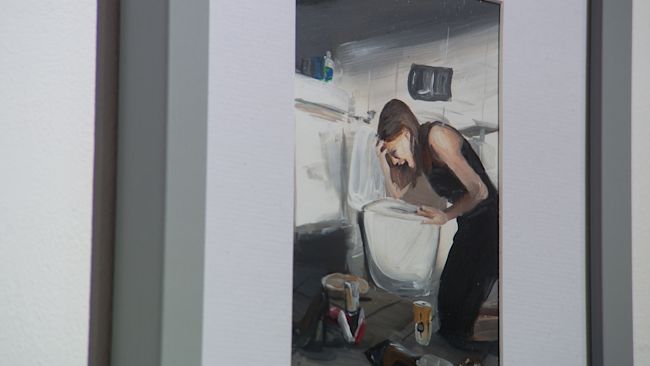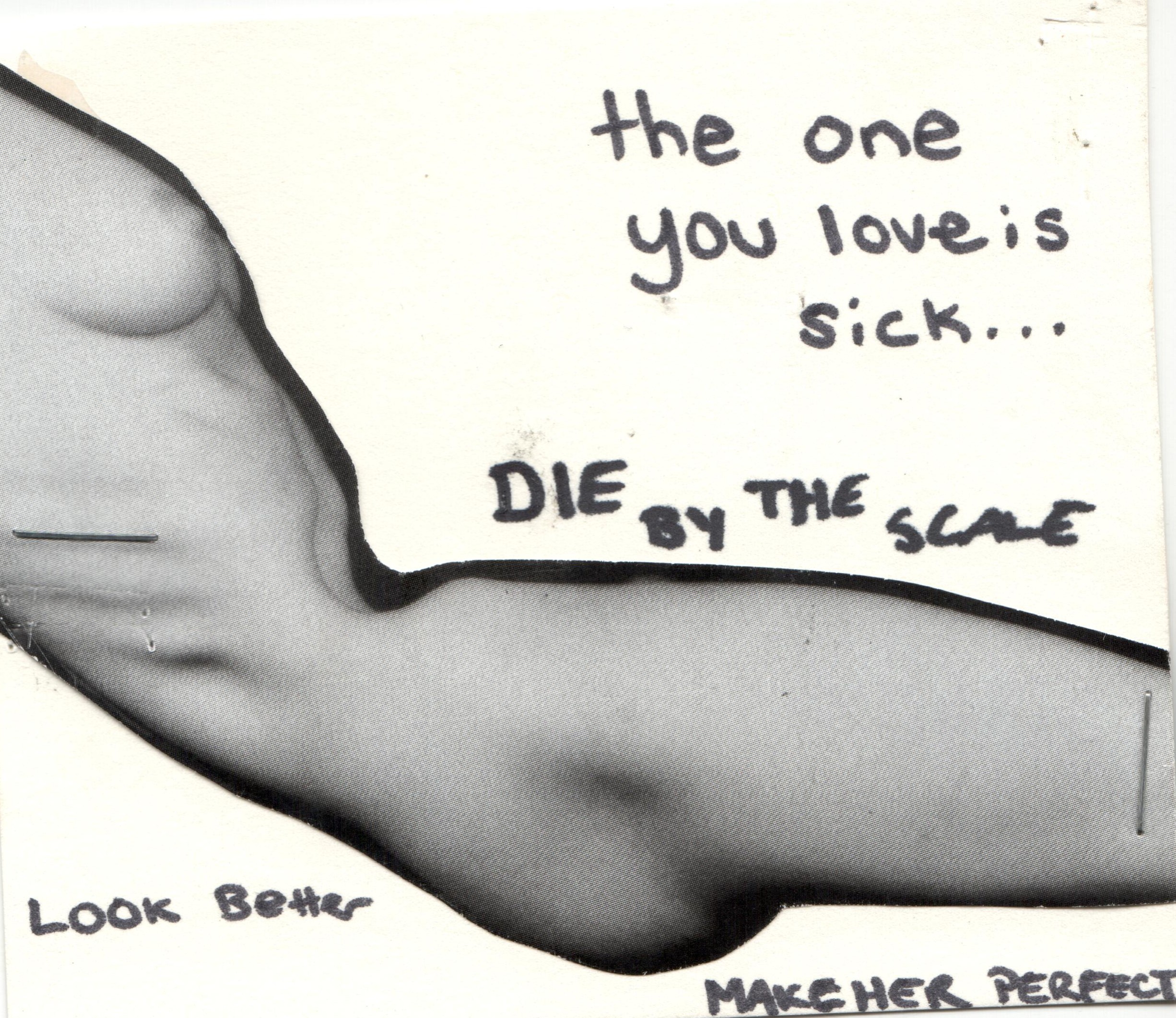creative outcomes | exhibitions | artist journal | process | engagement impact | the starving artist
artist journal

Within my doctoral study, I draw upon reflective and reflexive journaling from my autoethnographic artist experience living with Eating Disorders as one of my key methods of research data collection. The personal artist journal documents my ideas as they progress from my journey informed by my engagement with other artists with Eating Disorders, medical experts and broader literature about Eating Disorders. Additionally, an artist journal assists with not only reflective practice but an analytical gaze that cross-examines academic benchmarks with art production (Bacon, 2014). The main methodical nature of the practice-led approach is to examine key points of Eating Disorder activity and mental health points from my own experience. I will document key thoughts, feelings and images to engage with the nature of the illness.
The self-documentation and analysis within my artist journal serves as a useful self-guide by reflecting the ‘fitness’ of someone who suffers from an illness to critically engage with the nature of their illness. The act of self-interaction is a powerful message to the audience as there is a common perception that people with Eating Disorders are seen as ‘too unwell’ to work (Eiring, et al., 2021). My reflective journal includes my thought processes, artistic concepts, and past Eating Disorder experiences via the various aspects discussed below:
art expression
As an artist, I have it combine elements of writing, drawing, painting, collage, and even printmaking to express myself within my artist journal. Sometimes, art journaling can be a cathartic way of iterating my thoughts, feelings and struggles. This includes sketches from my everyday life, as well as an analysis of my thoughts such as my relationship break-up, my struggles with gender identity and my experience of suicidal thoughts.




free-form thoughts
The main benefit to free-form writing as one of my journal writing methods is that I learn not to edit my words — or my thoughts. Free-form writing allows for previously repressed thoughts and emotions to surface for further insights (I have been surprised at what I have written). Free-form journaling has been a form of self-care practice as my Obessive Compuslive Disorder often makes my thoughts repeat in my head non-stop until I can address them. Writing them down is a method for me to release these thoughts that are relentlessly ‘attacking’ my mind. This method therefore allows me to document, release and ‘move on’. This is so, as the process reflects on what I wrote later to critically engage with the content more clearly.







eating disorder tracking
As part of my reflective practice, I have been tracking every element of my Eating Disorder for over 8 years. At this point, I have an app for everything. I have an app for my steps, weight, calories and images of EVERY single food or drink I have consumed since 2015. I believe monitoring the elements of my Eating Disorder such as caloric intake might intensify the rigidity associated with the illness (Levinson, et al., 2017). Nonetheless, it has led me to become hyperaware of every influx of change I have gone through over the last couple of years and makes my perception more cognisant daily. This data gives my journaling tangible data to analyse all aspects such as the accuracy of the struggle (i.e. same food for months, 20,000 steps, weight-loss plateaus). This journal data reaffirms the authentic depictions of obsession and the reality of the illness taking toll on my overarching wellbeing who is ill from an Eating Dsorder. Upon reflection, my tracking reaffirms the inflexible thinking that appears to strengthen my obsessive-compulsive characteristics and embeds the Eating Disorder illness deeper and more entwined with my daily life.
artwork inspiration
I have been searching for inspiration in many different formats. Ranging from social media, Eating Disorder forums, art archives, museum databases and cultural sources like diet magazines. Art viewing has promoted the frequency of idea generation (fluency) and the originality of the ideas to branch away from the current discourse. This form of data collection aids my research to generate different perspectives by considering other artists' relationships with their bodies, art and societal representation of their personal struggles. Through an examination of art, I can see how art can be an experiential and novel medium of navigating sensitive issues, which has inspired my voice such as through Autoethnographic artists and has helped inspire my creative outputs.








